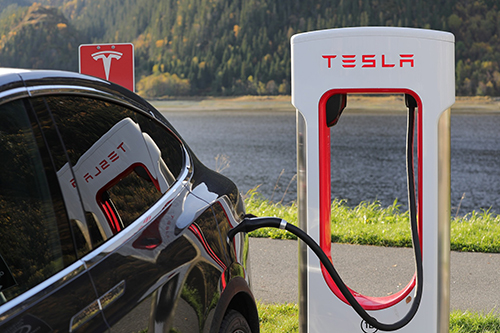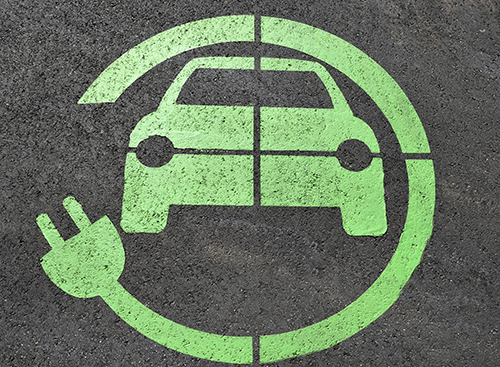There’s a lot of chatter about electric vehicles (EV) and what they mean for energy providers. Predictions are that they will make up 7 percent of the vehicles on the road and 20 percent of new vehicle sales by 2030, but building the EV charging network will cost billions and require between 118 and 733 terawatt-hours.
Shortage of Charging Facilities
To support EVs, the country will need a network of 9.6 million Level 2 charge ports, although it’s estimated that the lion’s share – 78 percent – will be in private homes. Even so, EV charging infrastructure will have to grow by 20 percent annually to reach that goal. The U.S. will need at least 900,000 public Level 2 and DC fast charging ports that provide convenient overnight charging to meet the needs of residents who don’t have access to garages or driveways and those travelling long distances.

One of the largest obstacles to wide adoption of EVs is the absence of a strong, nationwide network. Automakers have invested in providing public charging sites, and Tesla is in the front of the pack, having provided more than 700 stations – that are explicitly made for Tesla cars and don’t accommodate other makes.
However, other automakers have formed strategic partnerships to provide additional stations their residents can use. Ford recently announced its FordPass Charging Network in partnership with Greenlots, a Shell company, and Electrify America. The partnership will unveil an ambitious network of 12,000 charging stations with 35,000 ports and should accommodate most makes. In a similar partnership, GM and Bechtel will form a corporation to build investor-funded charging stations in larger cities, targeting apartment dwellers.
Corporate Buy-In
BP and Shell also are moving into the field, purchasing Chargemaster and Newmotion, respectively. Perceiving the potential threat to their bottom line, oil companies are hedging their bets by entering into the EV charging market themselves. In addition, retailers and restaurants are looking at charging ports as loss leaders – by providing a free place for consumers to charge EVs, they are encouraging them to patronize their businesses.
States are allowed to set aside funding from the Volkswagen emissions settlement for EV charging stations, and 41 states have elected to earmark $265 million toward such stations. In fact, Electrify America, a Volkswagen subsidiary formed as part of the settlement, will invest $2 billion in charging infrastructure by 2026.

In June, Michigan lawmakers decided to install EV charging stations at park-and-ride lot and state parks. Pennsylvania also is looking at encouraging EV use by prompting utilities to enter into the charging infrastructure space. Several states – California, Minnesota, Oregon and New York included – are also including utilities in their vision of an EV future.
There is a much higher adoption of EVs in many cities by drivers eager to reduce their carbon footprint, and those communities have taken note. The number of cities with 200 or more public charging points nearly doubled between 2017 and 2018, from 34 to 64. Additionally, communities with the greatest success in adapting EVs, especially those with municipal EV fleets, had strong partnerships with utilities.
Not Just Personal Vehicles
Dominion Energy recently announced its goal of 100 percent EV school buses in its Virginia territory by 2030, and pledged to cover the difference between the cost of diesel and electric models. Dominion envisions the school bus fleet as a vehicle to grid (V2G) resource in the latter stages, sending power back during high-demand and charging during low-demand.
Duke Energy recently awarded Asheville, N.C., a $200,000 grant to cover the costs of five EV bus charging systems as part of its program to expand EV charging systems in North Carolina. The program has funded nearly 200 public charging stations and EV bus charging stations in Greensboro, N.C. The company also is expanding charging stations in South Carolina and Florida. Duke officials touted these programs as helping them determine where to invest in grid infrastructure.
Energy providers are stepping up to the plate to the tune of millions in supply and service connection upgrades and consumer rebate incentives. They see the financial benefits of a shift to EVs, irrespective of how the charging infrastructure is built up – it can provide a buffer against falling load growth and the V2G model can make the grid more flexible. Since disruptors are moving into the industry, energy providers are carving out a piece of the market, so they don’t finding themselves wanting later.
Utilities are looking for opportunities to connect more deeply with consumers. HomeServe helps to improve consumer engagement for our utility partners through the integration of complementary home repair programs with utility initiatives such as energy efficiency and safety, offering residents greater access and choice. Partnership allows the utility to leverage HomeServe’s marketing and communications expertise to educate their residents through a variety of channels. For more information, contact us.

